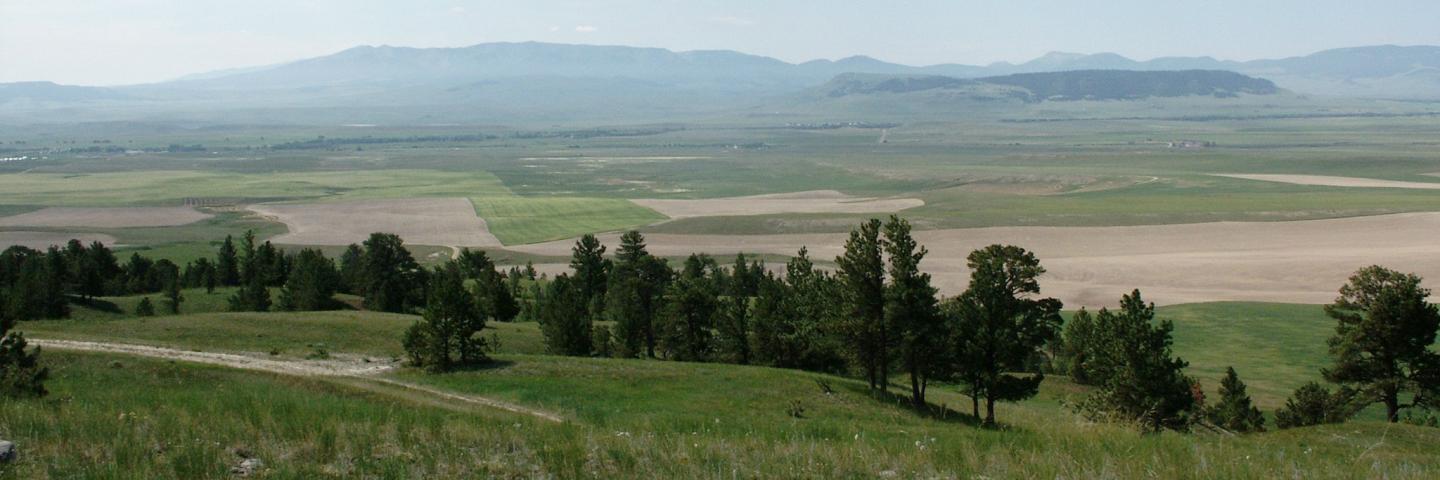
Wheatland County in central Montana covers an area of 1,428 square miles and has a population of 2,168. Harlowton is the county seat and is also the largest town in the county. The county is bounded on the north by the Big and Little Snowy Mountains, as well as the Belt Mountains and on the south by the Crazy Mountains. The highest elevation in Wheatland county is found in the extreme northwest corner, on the slopes of the Belt Mountains. From this point, elevations decrease both south and east until the Musselshell River is reached. The Musselshell River flows through the entire width of the county. Precipitation average is about 11 inches per year, and though the Musselshell River has historically been a dewatered stream, significant flooding events occurred in 1967, 2011, 2014 and 2018.
Most of Wheatland county is privately owned. State and Federal governments each own approximately 8% of the land in the county. The resource land use for the county is about 82% grazing land, 9% forest land, 1% irrigated hay/cropland and 8% dryland hay/cropland. Forest land is generally treated as grazing land due to the largely public ownership and limited logging opportunities. The predominant agriculture products in the area are beef cattle, wheat, and hay. The NRCS office, located in Harlowton, offers voluntary technical and financial assistance to private landowners interested in natural resource conservation based on a focused approach using long range planning with local input.
Current Financial Assistance Opportunities for Wheatland County Landowners
- Forest to Foothills TIP
- Rooting for Soil Health Targeted Implementation Plan (TIP)
- Montana Grassland Restoration TIP
- Montana Grasslands and Wildlife Corridors RCPP Project
In addition to these local projects, producers may also apply for statewide programs such as the Conservation Stewardship Program, national Environmental Quality Incentives Program initiatives, and conservation easement programs. Visit or call your local USDA Service Center, for more information on these and other programs, or see State Programs and Initiatives on the NRCS Montana webpage.
Additional Information
Wheatland County Local Working Group Meeting
Every year, county Conservation Districts and the NRCS host local working group meetings where farmers, landowners, conservation partners, and other stakeholders in the community discuss the natural resource needs for the county. Based on this feedback, NRCS updates the county’s long-range plan and develops new Targeted Implementation Plans to address those resource concerns.
Montana Focused Conservation
In Montana, NRCS uses a “Focused Conservation” strategy to guide its EQIP investments. Montana Focused Conservation begins with goals identified in local-level Long Range Plans. Based on those plans, NRCS develops Targeted Implementation Plans (TIPs) to guide on-the-ground implementation.
Learn MoreWhat's Available in My Montana County?
Current local financial assistance opportunities in Montana, listed by county. In addition to the local opportunities, producers may also apply for statewide and national programs.
Learn MoreMontana Programs and Application Dates
Program applications are accepted on a continual basis, however, NRCS establishes application dates for evaluation, ranking and approval of eligible applications. Applications received after the date will be automatically deferred to the next funding period.
Learn More

